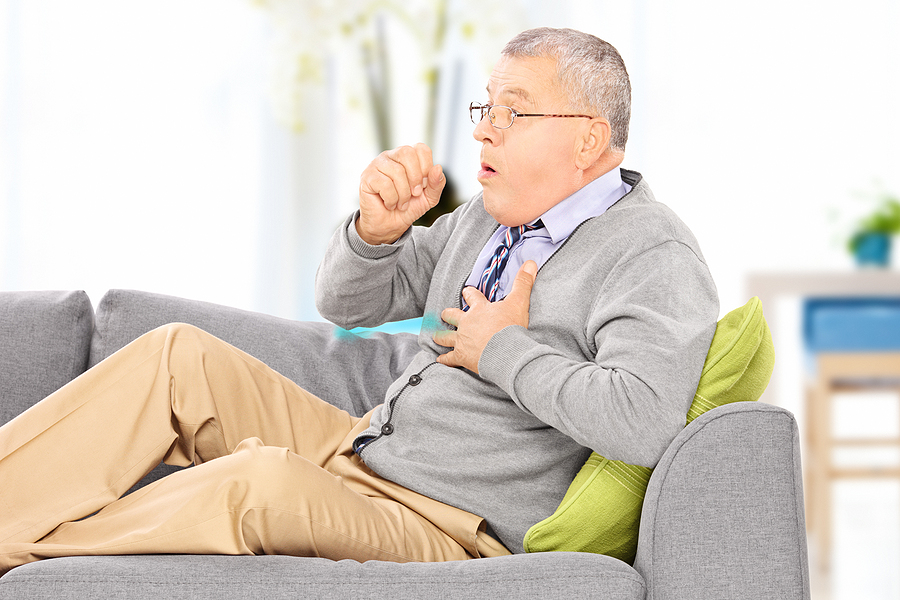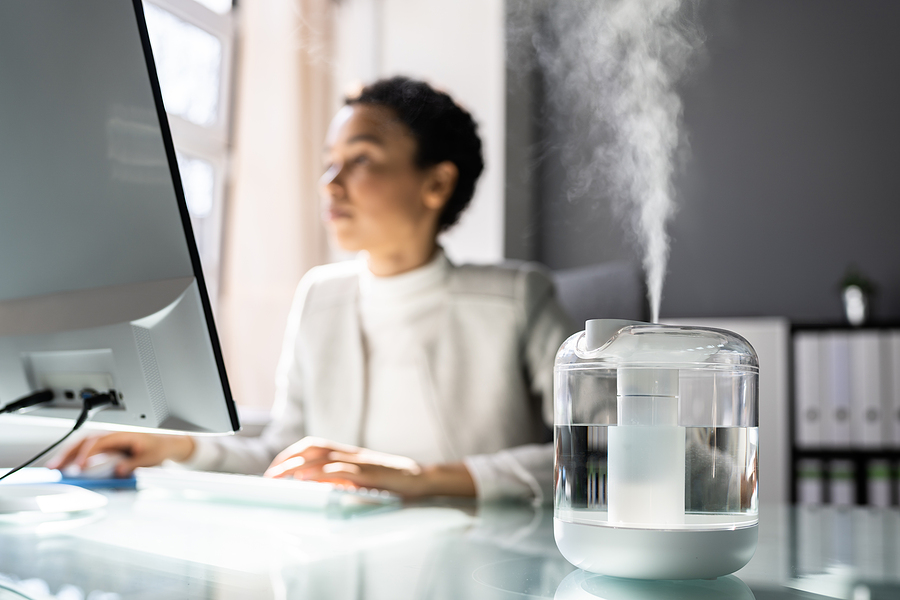
A nagging tickle in your throat has you coughing nonstop for hours and keeps you up all night. No matter how much you cough, you can’t seem to clear your throat. You’ve coughed so much your throat stings. Coughs may … Continue reading
READ MORE
How humid should the air within your home be to ease allergy symptoms? The EPA recommends keeping home humidity between 30% and 50%. If humidity exceeds 60%, the risk of mold and mildew growth increases. Dust mites also thrive in humidity levels of 70% to 80%, which triggers dust mite allergies.
If it’s drier than 30%, it dries out your skin, throat, and nasal passages, which exacerbates allergies. Nose bleeds and chapped lips are more likely in dry air. It also increases the risk of static electricity zaps as you touch things in your home.
Another problem with dry indoor air is that it can exacerbate conditions like asthma, bronchitis, and sinus issues. Premium Allergy knows that keeping your home in the correct humidity range is essential, and home humidifiers are one of the easiest ways to do this.
There are two main forms of humidifiers: portable and whole-house. Each one of those has different methods for adding humidity.
Whole-house humidifiers come in one of three forms.
If your home doesn’t have ducts or you don’t want to invest in a humidifier to work with your HVAC system, portable humidifiers are ideal.
Humidifiers offer many benefits that go a long way to keeping you healthy, easing your allergies, and helping your home maintain its value. Among the pros are the following:
While that all sounds great, humidifiers also have downsides that people do not think about. The most important is that a humidifier can become a breeding ground for bacteria and mold. The components within a water tank and in the fans are damp 24/7 and that makes them the right environment for bacteria and mold to grow.
If you do not take the time to carefully clean your humidifier as recommended, those contaminants are released through the mist and humidity that enter your home. Your humidifier can make you sick.
Cleaning your humidifier is a daily and weekly task. Each day, you want to rinse out the water tank and add clean water. If the system has a recommended additive, use it. Once a week, you want to add vinegar to your dehumidifier and let that sit. That breaks up any mineral scale. Flush the system with a bleach solution as directed in the owner’s manual.
Make sure you change your filter every month or two. Read what the owner’s manual recommends and change it as often as it says. You should also visually inspect the filter each week to make sure it’s not clogged with slime or mold. If it is, change it sooner.
Another problem with infrequent cleanings is that minerals from the water will build up and restrict flow or create clogs that prevent any water from moving from the tank to the rest of the system. Mineral scale makes your system work harder and eventually stops your dehumidifier from working.
If you turn on your humidifier and notice the air smells musty or moldy, stop running it. A thorough cleaning is important. You do not want to make your allergies worse by adding mold spores to the rooms without your home.
Allergies make you feel lousy. When humidity is making your mold/mildew or dust mite allergies flare up, you need better options for reducing allergy symbols. If your air is too dry, your nasal passages are dry and increase inflammation.
An allergy occurs when your body responds to an allergen in an extreme manner. The allergen triggers a histamine response that triggers extreme inflammation. It’s the inflammation in your nose, throat, and sinuses that makes you sneeze, feel congested, and create itchy, watery eyes.
A humidifier is an ideal way to keep your home’s air humid and ease the symptoms you experience with these allergies. If you have a problem with dust mite allergies, make sure the humidity is out of the mites’ comfort zone. You also need to wash things dust mites cling to, such as bedding, curtains, pillows, mattresses, stuffed toys, and carpets.
Mold allergies require careful cleaning of any surface where you see excess moisture, such as a window sill or under a sink. Put on a mask to clean mold with a product designed to kill mold spores. If you want a low-fume option, hydrogen peroxide is a good way to kill mold.
Once your home is clean and you have the humidity to the proper level, act on easing your allergy symptoms permanently. While over-the-counter antihistamines reduce the inflammation that occurs with allergies, they’re not always as effective as people want.
Instead of spending money on medications that aren’t working, see an allergy doctor for alternative allergy treatments. Immunotherapy is a fantastic way to ease dust mites and mold allergies. Modern allergy treatments help your body slowly develop a healthier reaction to allergens with the help of allergy shots or under-the-tongue drops or meltables. In time, the histamine response that makes you feel uncomfortable eases.
Premium Allergy’s doctor offers permanent solutions to the allergies you experience. From testing to three types of immunotherapy, our team helps you uncover what triggers your allergies and find a way to keep your symptoms from impacting your daily routine.